Flower Power 101: Top 4 Tips for Flower Gardening
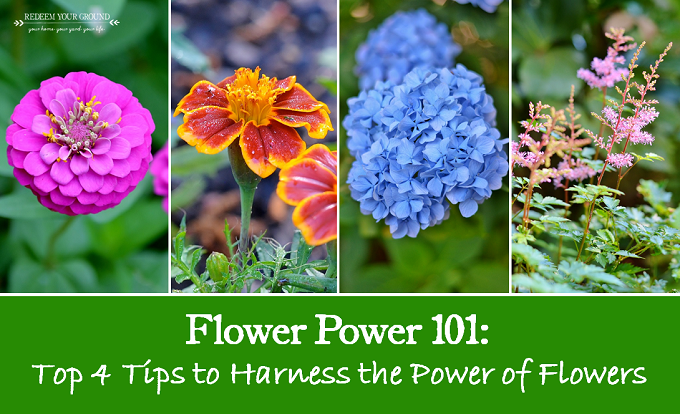
There are few things that bring more life and beauty to an outdoor space than flowers. The more the merrier, right? They’re so versatile…bringing feelings of peace and tranquility, or an air of excitement and delight. It just depends on what you’re going for.
With Spring now upon us and summer just around the corner, I’m thinking that some of you might be considering how to best harness the power of flowers in your garden. So I thought I’d share are a few tips to help you along your flowery way.
![]()
Tip #1: Know What’s What
Flowers come in all shapes, sizes, and colors. And they grow on all different types of plants. In order to best care for and get the most out of your flowers, you need to know what’s what.
- Annuals: As the word suggests, annuals have a one year life cycle…so be prepared to replant them every year or, more likely, every season. There’s more to know about annuals (like depending on where you live some annuals may actually be perennials), but let’s not over-complicate things right now. Some of the most popular annuals are: zinnias, verbena, marigolds, salvia, certain types of daisies, impatiens, cosmos, sweet alyssum, petunias, pansies, lobelia, and some sunflowers.
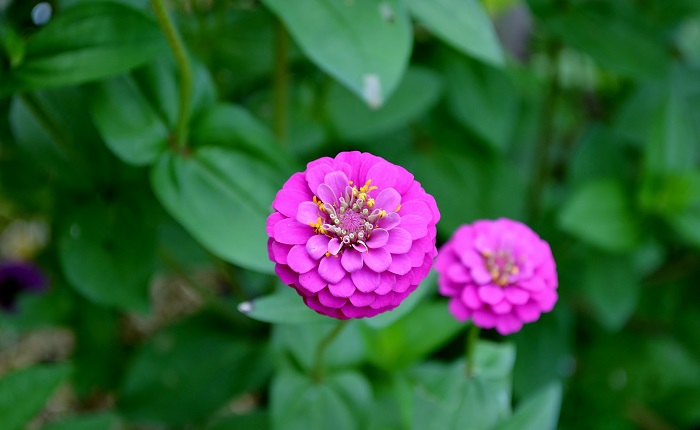
Zinnias
- Perennials: Although they die back, perennials return every year, which means you won’t have to replant them. In fact, many perennials can be divided and put somewhere else in your garden or shared with a friend. Bonus! Because I lean towards being a lazy gardener, I prefer perennials to annuals – enjoying them year after year with minimal effort. The downside to perennials is that they only bloom for about 2-4 weeks a season, which is why you may want to choose different flowers that show their stuff at varying times. That way you always have something colorful to look at. My favorite perennials are: coneflowers, guaras, black-eyed Susans, snapdragons, goldenrod, chrysanthemums (mainly because I like to say chrysanthemum), astilbe, sedum, other types of daisies, and peonies!
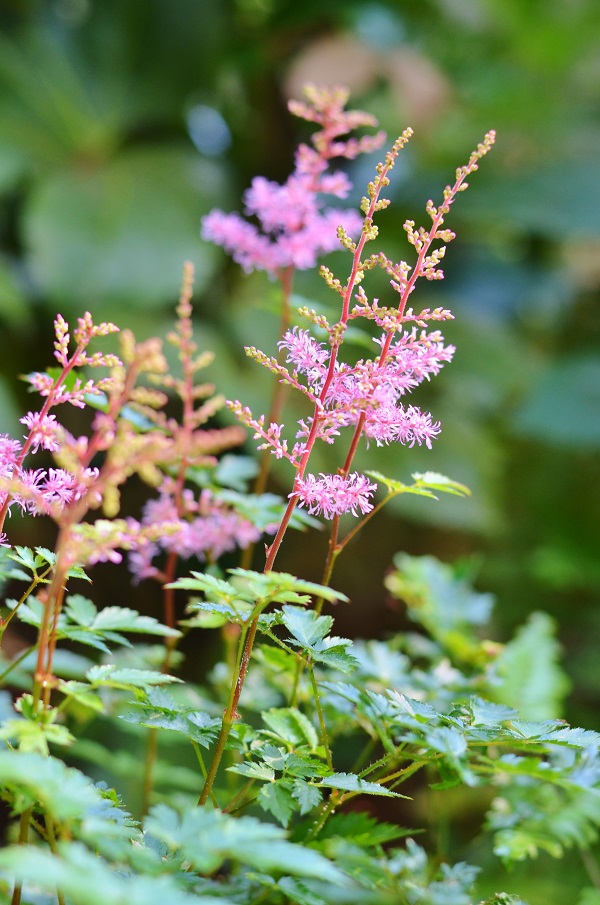
Astilbe
- Biennials: These grow leaves their first year, flower the next, and then go on to seed and die. They’re often sold as perennials, so don’t occupy too much brain space with this word. That said, if your foxgloves or hollyhocks are only producing green leaves, don’t worry, be patient. They’ll give you what you’re looking for in year 2.
- Bulbs: Some of the most vibrant flower gardens are those with waves and waves of bulbs. These include: calla lilies, tulips, gladiolus, daffodils, dahlias, and crocuses. Since there are spring bulbs and summer bulbs, make sure you read the label before planting them. Also, depending on where you live, some bulbs come back year after year. But you may need to dig them up and store them during the winter months to be replanted the following year.
Tip #2: Think Beyond Traditional Flowers
There’s so much more to a flower garden than your traditional flowers. Sure, they typically provide the wow factor but, with a backdrop of green shrubs, their beauty is fully realized. If you’re looking for color and texture, flowers aren’t the only game in town.
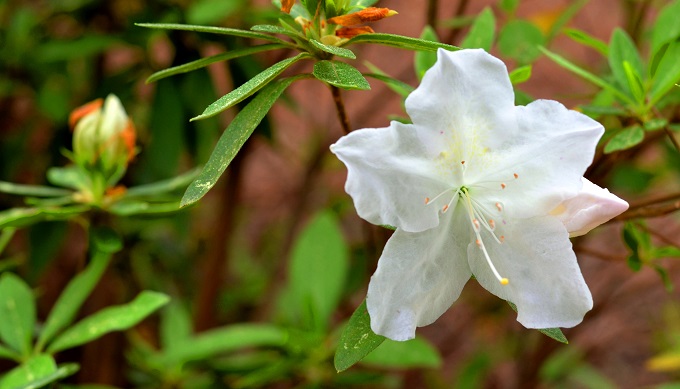
Mrs. G.G. Gerbing Azaleas
- Shrubs: Evergreen shrubs form the backbone of almost any garden. They not only do the heavy-lifting by providing the necessary structure that all the other “fairer” plants and flowers rely on, but they also brave the cold winter months and keep their leaves — giving you something alive and green to look at year-round. There are plenty of evergreen shrubs that also produce flowers. Some of my favorites are azaleas, camellias, gardenias, and variegated winter daphne. (The last two also have the most amazing fragrance.) Perennial shrubs help round out the beauty and interest of any garden space. Hydrangeas, of all types and snowball viburnum top my list.
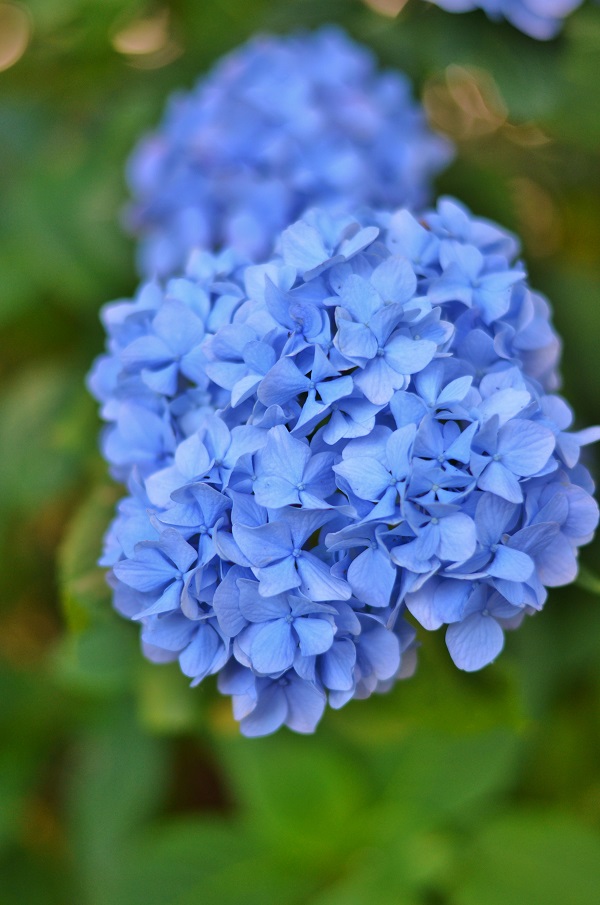
Nikko Blue Hydrangeas
- Understory Trees: Understory trees (i.e., the smaller ones) help vary height in a space and are a natural way to set boundaries that create rooms in your yard. These trees can also serve as a focal point around and under which your shrubs and flowers can be planted. In addition, their shade can help provide better growing conditions for certain plants. And as with flowers, the sky’s the limit when it comes to the variety of trees. Flowering dogwoods, serviceberries, redbuds, and Japanese maples are some of my faves.
- Vines: I incorporate vines every chance I get. With their winding and cascading habits, they add grace and make it feel like your garden has been there for years. Vines come in all different shapes, sizes, and types – some flower, some don’t, some are annuals, some evergreen, and some are deciduous (i.e., they lose their leaves every year). My personal favorites are Clematis Armandii, Lady Banks rose, and confederate jasmine, all of which are evergreen and have wonderful flowers.
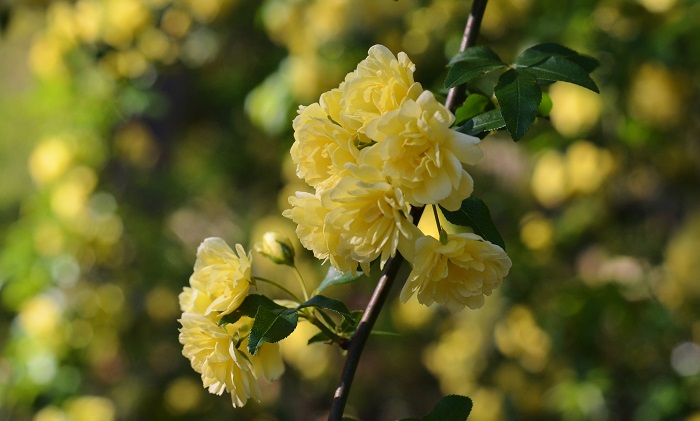
Lady Bank’s Rose
- Ground Covers: Don’t forget ground covers, which add much needed texture to outdoor spaces, and establish the borders of your planting beds. The colors of their flowers and leaves run the entire spectrum. “Big Blue” liriope, Lenton roses, autumn ferns, creeping Jenny, and creeping phlox put the finishing touches on my flower garden.
Tip #3: Pick the Right Spot
Think through where you plant your flower garden to ensure maximum impact.
- Look to the sun: Most flowers require a good deal of sun: 6 to 8 hours a day. But don’t despair if your yard is a on the shadier side of town (mine is). There are plenty of flowers to choose from that tolerate some degree of shade. So study your yard, read the flower labels, and plant accordingly.
- Don’t be afraid to take a chance: If there’s a flower you’ve just got to have, but you don’t have the perfect sun exposure, go ahead try it anyway. Although it might not bloom as much, it may just work. Besides, one failed attempt at growing something you love won’t likely break the bank. Nothing ventured, nothing gained.
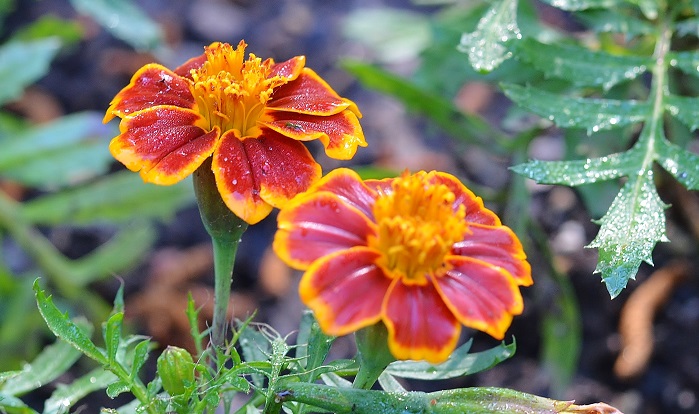
Marigolds
- Highlight the good stuff: Be intentional about where you put your flowers, and use them to draw attention to those aspects of your yard that you really want to highlight; your front and back doors, the entrance to a path or your veggie garden, or the primary views from your home are all great elements to consider bringing to life with flowers.
Tip #4: Give Your Flowers What They Need
Besides the right amount of sun, there are a few other factors you need to consider for your flower garden: namely soil, water, mulch, and fertilizer.
- Soil: To ensure happy flowers, your soil needs to provide your flowers what they require to grow big, strong, and colorful. Unfortunately the soil in most yards is less than ideal. So, before you just drop your flowers into the ground, you’ll likely need to amend your soil. Amend is just a fancy gardening word that means mixing in organic material, nutrients, and potentially other amendments that your native soil lacks. And when you do that you’re creating the physical environment needed for proper drainage and root development, all of which allow for the appropriate transfer of water and nutrients. If you’d like to learn more, jump on over to my post onthe basics of amending your soil.
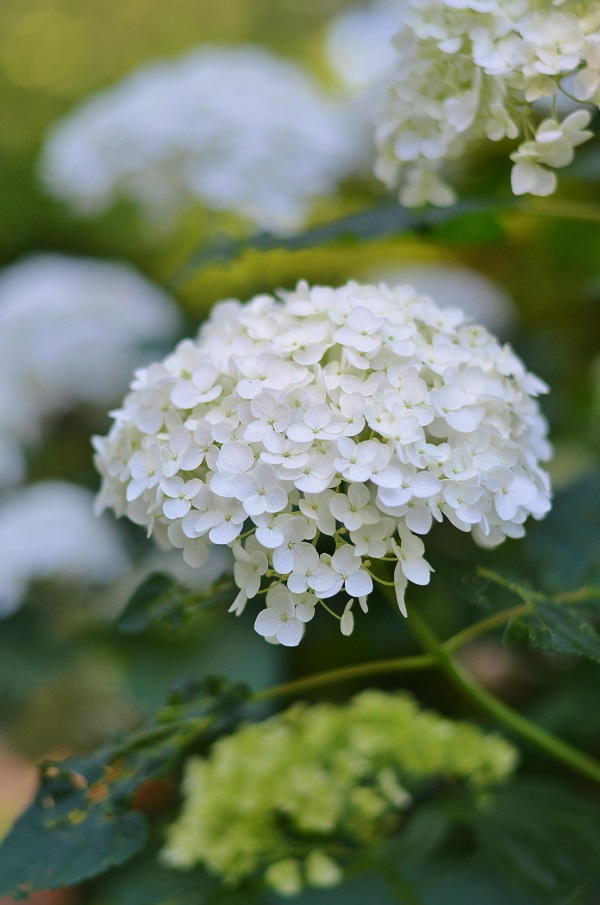
Annabelle Hydrangeas
- Water: How much you should water your flowers varies greatly, depending on the type of flower, your soil, and rain. That said, most flowers need about ½” to 1” of water a week. The good thing is that most flowers tell you when they’re thirsty by wilting just a bit. But don’t let them beg for a drink for too long, otherwise they may never fully recover. The best time to water your flowers is in the early morning when their leaves and the ground are cooler and you’re less likely to lose water through evaporation. Give them a nice long, deep soaking. They’ll thank you.
- Mulch: Not only does mulch neaten up your flower beds, it also helps keep water in and keep weeds out. So cover the base of your flowers and shrubs with a good couple of inches of mulch. Cypress mulch, bark chips, and even leaves are good options to use — all have different pros and cons, depending on what and where you’re mulching. As these natural mulches decompose they provide your flowers nutrients that they love.
- Fertilizer: Again, depending on what flowers you’ve planted, you may need to give them an added boost with fertilizer. Generally speaking, most flowers benefit from an all-purpose fertilizer. And there are organic fertilizers, so if that’s your thing you have options. If you’re interested, you can learnmore on the post I did fertilizer basics.
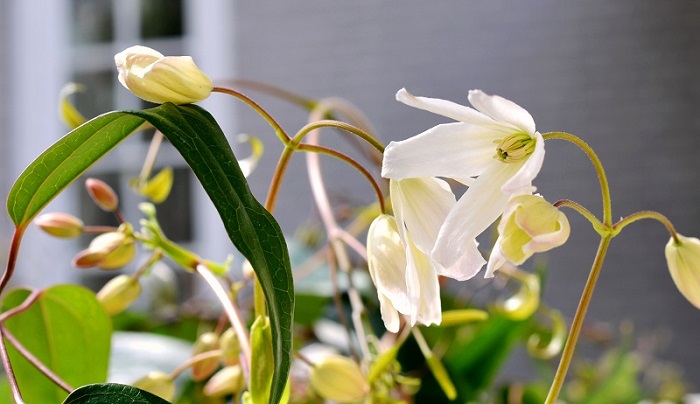
Evergreen Clematis ‘Armandii’
![]()
Well, I think that’s enough flower gardening goodies for one sitting. Please let me know if you have any questions or need anything else from us. We’d be glad to help where we can.
Happy flower gardening friends!

(Note: This post appeared first in the gardening series I did last year on Apartment Therapy.)
You may also enjoy these posts from RYG ...
If you're not already subscribed to RYG and want to get periodic updates, links to new posts & other ground redeeming info ... just enter your email address below. Easy as that!

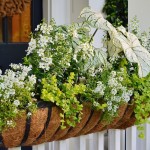
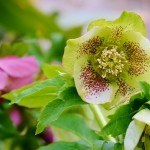



I love reading this article over and over. Thanks !
Thanks so much Helen…and do…keep reading it over…and over…and over! Take care, D.
Great tips! I have been doing lots of these stuff already, except mulch – I just do that with my neighbors. Thanks for sharing.
Thanks for chiming in Anna…and so glad you liked our tips. Please share some pics this spring when your flowers are bursting out in all their glory! Take care, D.
Your posts are enjoyable to read and very informative. Will be linking back to your blog in a future post about hydrangeas.
Thanks so much…so glad you’ve found them helpful and enjoyable. And thanks for potentially linking back to one of my hydrangea posts! Take care, Doug